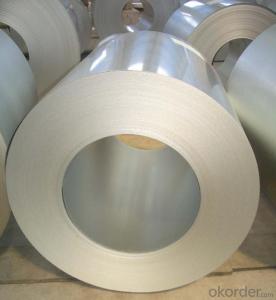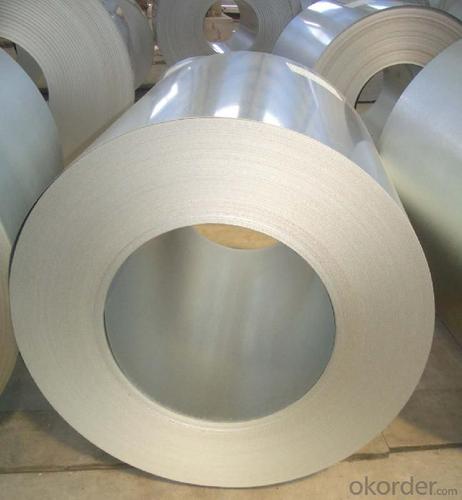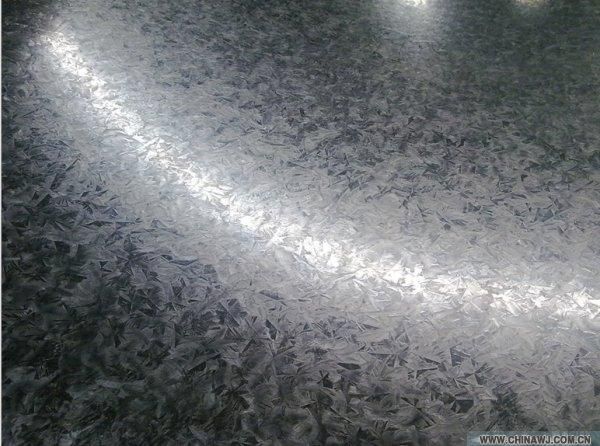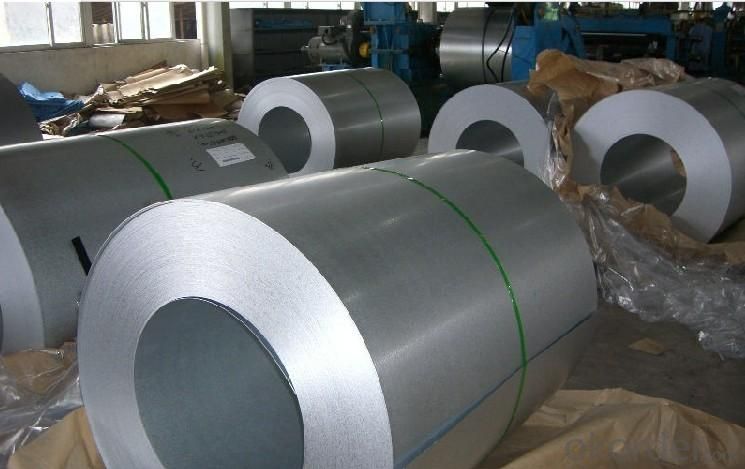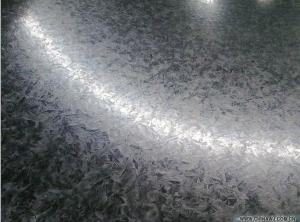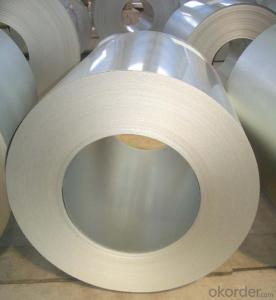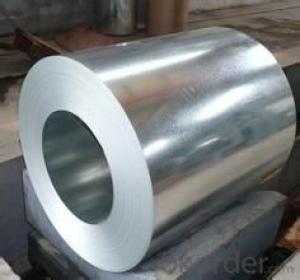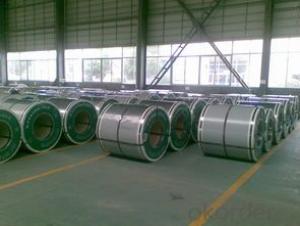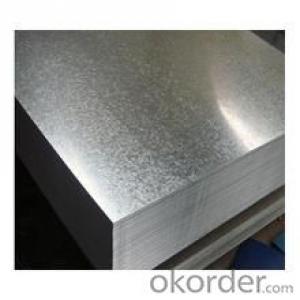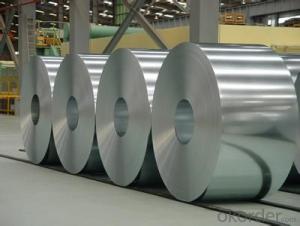Hot-dip Aluzinc Steel Building Roof Walls --Good Manufacturability
- Loading Port:
- China main port
- Payment Terms:
- TT OR LC
- Min Order Qty:
- 50 m.t.
- Supply Capability:
- 10000 m.t./month
OKorder Service Pledge
OKorder Financial Service
You Might Also Like
Hot-dip Aluzinc Steel Building Roof Walls --Good Manufacturability
1. Description of the Hot-dip Aluzinc Steel:
Hot-dip aluzinc steel structure is composed of aluminum-zinc alloy, consisting of 55% aluminum, 43% zinc and 2% at 600 ℃ silicon solidification temperature and composition.
2.Main Features of the Hot-dip Aluzinc Steel:
• Excellent corrosion resistance
• High temperature oxidation resistance
• High hot reflectance
• Good manufacturability
•Beautiful appearance
•Surface coating
3.Hot-dip Aluzinc Steel Images
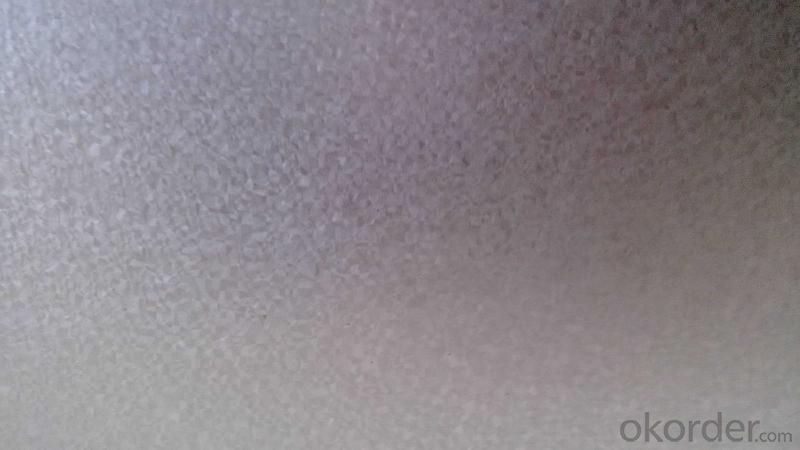

4.Hot-dip Aluzinc Steel Specification
AVAILABLE SPECIFICATION
HOT-DIP ALUZINC STEEL COILS | |
THICKNESS | 0.16mm-3.5mm |
WIDTH | 1250mm MAX |
COATING MASS | 30g/ m2-185 g/ m2 |
SPANGLE | Regular Spangle, Minimized Spangle, Zero Spangle |
SURFACE TREATMENT | Chromated / non-chromated, Oiled / non-oiled, Anti Finger Print |
COIL INNER DIAMETER | 508mm or 610mm |
5.FAQ of Hot-dip Aluzinc Steel
We have organized several common questions for our clients,may help you sincerely:
1.What advantages does your company have?
Cement : Annual capacity of 400 million tons, No. 1 in the world
Fiberglass: Annual capacity of 1 million tons fiberglass, No. 1 in the world.
Composite Materials — Rotor Blade: Annual production capacity of 15,000 pieces, No.1 in China, Top3 worldwide
Glass: CNBM owns about 20 modern float glass product`ion lines, With annual capacity of 10 million square meters glass Commercial concrete: Annual capacity of 0.35 billion cubic meters, No. 1 in the world.
Refractory Material: Annual capacity of 40,000 tons casting refractory, No.1 in the world.
2.What advantages do your products have?
Firstly, our base material is of high quality, Their performance is in smooth and flat surface,no edge wave ,good flexibility.
Secondly, high quality zinc ingoats, 97.5% zinc,1.5% silicon,1% others, the same zinc coating measured by metal coating thickness or by zinc weight
Thirdly, high precision: Tolerance strictly according to ASTM or JISG standard even more rigid.
- Q: What are the common applications of hot-dip galvanized steel coils?
- Hot-dip galvanized steel coils have a wide range of applications due to their excellent corrosion resistance and durability. Some of the common applications of hot-dip galvanized steel coils include: 1. Construction: Hot-dip galvanized steel coils are extensively used in the construction industry for various applications such as roofing, siding, gutters, and downspouts. The corrosion resistance of these coils makes them ideal for withstanding harsh weather conditions, ensuring long-lasting and low-maintenance structures. 2. Automotive: Hot-dip galvanized steel coils are widely used in the automotive industry for manufacturing parts like body panels, frames, chassis, and structural components. The corrosion resistance and high strength of these coils provide enhanced protection against rust and ensure the longevity of automotive parts. 3. Appliances: Hot-dip galvanized steel coils find applications in the manufacturing of various household appliances such as refrigerators, air conditioners, ovens, and washing machines. The corrosion resistance and aesthetic appeal of galvanized steel make it an ideal choice for these appliances. 4. Agriculture: Hot-dip galvanized steel coils are commonly used in the agricultural sector for building greenhouses, livestock shelters, fences, and irrigation systems. The galvanized coating protects the steel from corrosion caused by exposure to moisture and chemicals commonly found in agricultural settings. 5. Electrical and Telecommunication: Hot-dip galvanized steel coils are utilized in the electrical and telecommunication industries for the production of transmission towers, poles, cable trays, and electrical conduits. The corrosion resistance and high strength of galvanized steel ensure the safety and reliability of these infrastructure components. 6. Transportation: Hot-dip galvanized steel coils are extensively used in the transportation industry for manufacturing trailers, shipping containers, and chassis components. The galvanized coating provides protection against corrosion caused by exposure to road salt, moisture, and various environmental factors. 7. Industrial Applications: Hot-dip galvanized steel coils are employed in various industrial applications such as storage tanks, pipelines, ductwork, and industrial equipment. The corrosion resistance and durability of galvanized steel ensure the integrity and longevity of these structures and equipment. In summary, the common applications of hot-dip galvanized steel coils encompass a wide range of industries, including construction, automotive, appliances, agriculture, electrical and telecommunication, transportation, and industrial sectors. The corrosion resistance, durability, and aesthetic appeal of galvanized steel make it a versatile and widely used material in these applications.
- Q: What is the weight of a standard steel coil?
- The weight of a standard steel coil can vary depending on its size and thickness. However, a typical range for a standard steel coil is between 5,000 to 10,000 pounds (2,268 to 4,536 kilograms).
- Q: did bible stated that steel is coming from outer space. i mean meteor rocks that enter our earth sistem contains the minerals iron.
- steel is manufactured from iron ore and coal in furnaces and it is not found in raw state in nature
- Q: I am a beginner (never played before!) and I am going to try to teach myself since I think it is a lovely instrument. I am fourteen-years-old so I am not 'adult-size', haha. Anyway, what is difference between nylon strings and steel strings?Thanks :)
- Make your choice based on the type of music you intend to play. Nylon strings are used primarily for classical, flamenco and folk music. Steel strings are used for pop, rock, blues, country, folk, bluegrass.... Both types of guitar are tuned the same, so you *can* play any style of music on either guitar. The big difference is in the tone. Nylon strings are rich and full...if perhaps a little mellow. Steel strings are twangy and have a bite to the sound. There are differences in the construction and feel of the guitars, but that's not critical to your decision. Match the guitar to the music you intend to play. At 14 yrs old, you are certainly big enough for a full sized guitar....and I'll bet you're still growing, right? Even full sized guitars still vary in the size of the body. Try a few out to see how well they fit your reach.
- Q: Are Danielle steel books good to read. Im 15 , but do I have to wait until Im a bit older.
- Wait until you are eighty, the dementia will make the process less painful Otherwise, you know best how mature you are and Danielle Steel is sugary romance, not really sex.
- Q: How are steel coils inspected for impact resistance using impact testers?
- Steel coils are inspected for impact resistance using impact testers by subjecting them to controlled impacts of varying force and measuring the resulting deformation or damage. The testers typically consist of a pendulum or a falling weight that strikes the surface of the coil, simulating real-life impacts. The force and velocity of the impact can be adjusted as per the testing requirements. The extent of deformation or damage is then visually assessed or measured using specialized equipment, providing valuable information about the coil's ability to withstand impacts and potential performance in real-world applications.
- Q: i am working in a firm that deals with steels.. so it is necessary for me to understand the chemistry of the steels from their names so that i need not memorize all the grades with their metallury.. where can i find information about this nomenclature ? please help
- For steels with a four number code like 1020, 4140 ect the first two digits are the alloying information. I think you need to memorise those. 10 steels are plain carbon steel with no alloying. 41 steels are chrome-molly. The third and forth digits are the carbon content. 1020 is 0.2% Carbon, 4140 is 0.4% carbon. I don't know if there is a system to stainless steels.
- Q: What is the typical size and weight of a steel coil?
- The typical size and weight of a steel coil can vary depending on the specific application and industry. However, in general, steel coils are typically manufactured in widths ranging from 0.5 to 2 meters (1.6 to 6.6 feet) and can weigh anywhere between 1 to 25 metric tons (2,205 to 55,116 pounds). The exact size and weight of a steel coil will depend on factors such as the type of steel used, the intended use of the coil, and the manufacturing process employed.
- Q: Can steel coils be used in architectural applications?
- Yes, steel coils can be used in architectural applications. Steel coils are commonly used in the construction industry due to their strength, durability, and versatility. They can be shaped, formed, and fabricated into various architectural components such as roofs, walls, facades, and structural elements. Additionally, steel coils can be coated or painted to enhance their aesthetic appeal and protect them from corrosion, making them a popular choice in architectural designs.
- Q: How do steel coils contribute to energy efficiency in lighting?
- Steel coils do not directly contribute to energy efficiency in lighting. Steel coils are typically used in the manufacturing of various electrical and electronic appliances, including lighting fixtures. However, the energy efficiency in lighting primarily depends on the type of light source used. The energy efficiency of lighting is typically determined by the type of light bulb or fixture used, such as incandescent, fluorescent, LED, or halogen. Each of these light sources has different energy consumption characteristics. Steel coils, on the other hand, are primarily used for structural support, heat dissipation, and protection in lighting fixtures. They are not directly involved in the energy efficiency of the lighting system. However, steel coils can indirectly contribute to energy efficiency in lighting by providing strong and durable support to the lighting fixtures. This allows for reliable and long-lasting installations, minimizing the need for frequent maintenance and replacements. A well-supported lighting system ensures optimal performance and reduces any energy wastage or inefficiencies that may arise from loose or unstable fixtures. Additionally, steel coils can also be utilized in the manufacturing of reflectors or housings for lighting fixtures, which can help enhance the overall efficiency and distribution of light. By effectively reflecting and directing the light output, the utilization of energy and illumination can be optimized, reducing any potential energy waste. While steel coils themselves do not directly impact the energy efficiency of lighting, their use in the construction and support of lighting fixtures can indirectly contribute to a more energy-efficient lighting system.
Send your message to us
Hot-dip Aluzinc Steel Building Roof Walls --Good Manufacturability
- Loading Port:
- China main port
- Payment Terms:
- TT OR LC
- Min Order Qty:
- 50 m.t.
- Supply Capability:
- 10000 m.t./month
OKorder Service Pledge
OKorder Financial Service
Similar products
Hot products
Hot Searches
Related keywords
